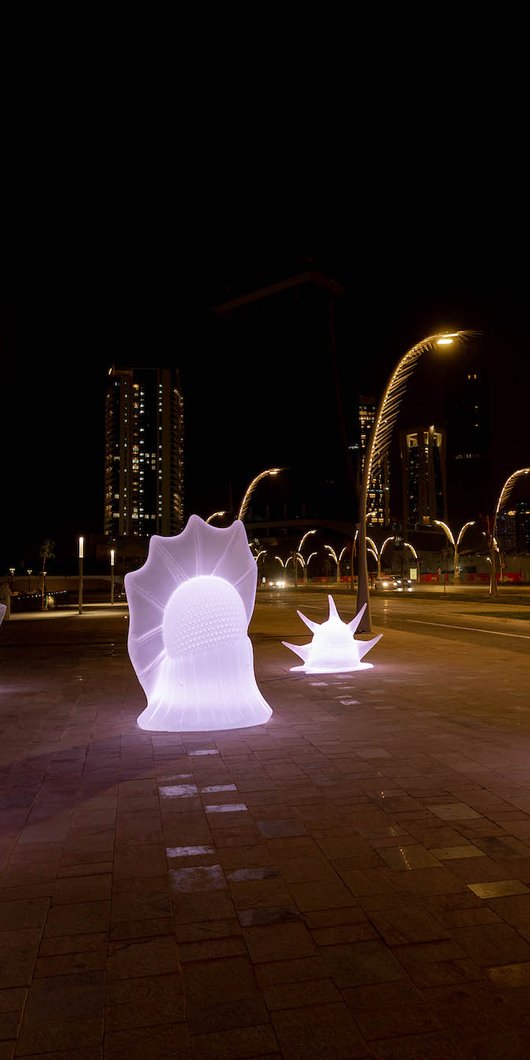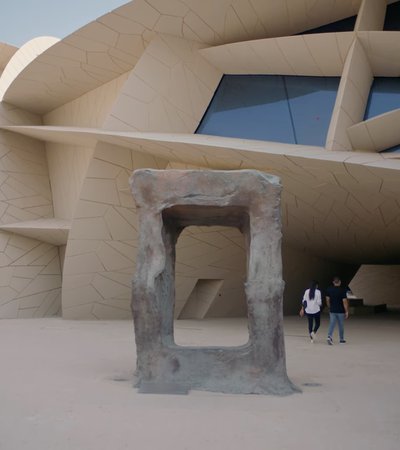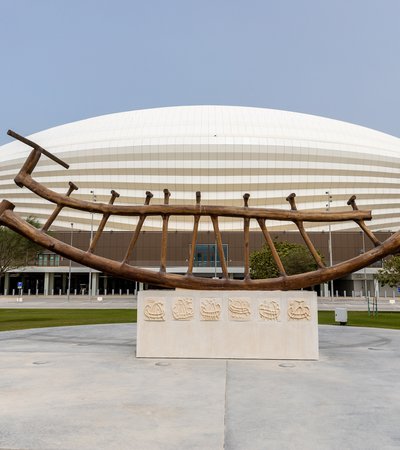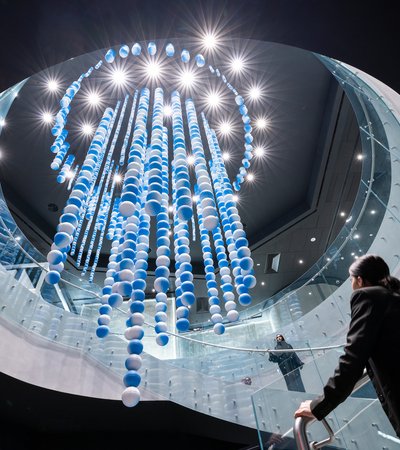Monira Al Qadiri (b. 1983) is a Kuwaiti visual artist born in Senegal and currently based in Berlin. Her work explores petrocultures—cultures that are dependent on or shaped by petrochemicals—and their possible futures, as well as their legacies of corruption.
In prehistoric times much of the Arabian Peninsula lay under water, which is why ancient marine fossils can be found in the soil and mountains in some inland areas. Zephyr is a large-scale re-creation of a microscopic organism found in fossilised marine algae discovered in the Arabian Peninsula; lit up in order to mimic the bioluminescence of the organism. These single-cell fossils known as dinoflagellates have existed for hundreds of millions of years, reproducing by themselves and creating oxygen through photosynthesis.
As half of the world’s oxygen is produced by these sea creatures, Zephyr calls on us to pay attention to the ecology and health of our oceans. It also draws attention to the relationship between the Gulf coast and the sea, and the ways in which it is being undermined by a fast modernisation process.



